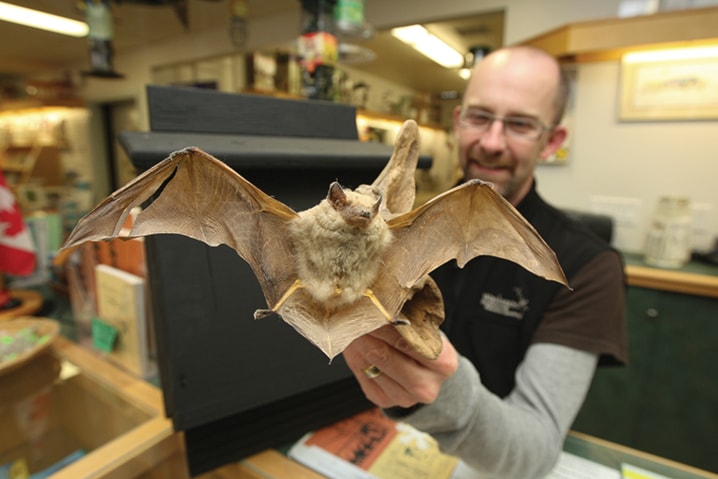Alberta is still keeping an eye out for a deadly disease that is killing off bats in North America.
White-nose syndrome, caused by a fungus that only affects bats that hibernate in caves, is in Eastern Canada and slowly spreading west.
First discovered in New York State in 2006, the fungus irritates bats, causing them to wake up during winter hibernation. Without insects, their food source, the bats then starve to death.
The fungus is not harmful to humans but is believed it can be spread by humans.
Alberta Environment and Sustainable Resource Development is involved in a bat population monitoring program, as well as working with members of the caving community to develop decontamination protocol for clothing and equipment used in caves to minimize the risk of transferring the fungal spores.
Wapibi Cave northwest of Nordegg and Cadomin Cave, near Hinton in Whitehorse Wildland Provincial Park, are also closed to the public.
AESRD says the best way to help protect Alberta’s bats is to keep the fungus out of Alberta for as long as possible.
Todd Nivens, Kerry Wood Nature Centre’s program co-ordinator, said in the Red Deer area, it’s mostly big and little brown bats, which do hibernate, that help keep insects like mosquitoes in check.
“Bats are awesome. It’s not just people that insects can become a problem for. Insects can parasitize birds and other mammals,” Nivens said on Wednesday about the web-winged mammals that eat their body weight in insects each evening.
“I think if you took bats out of the equation, you’d have a considerably bigger mosquito issue.”
Bats return to the Red Deer area, along with insects, in late May or early June.
As long as the local bat population remains healthy, people can help bats play a role in the local ecosystem by installing bat houses, like those available at Kerry Wood Nature Centre, in their yards.
“The benefits of bats outweigh any unsubstantiated fears people might have about them,” Nivens said. “You can have them in your neighbourhood, you can have them in your backyard, and you essentially won’t interact with them. They are truly nocturnal. They will sleep the day away.”
Bat houses, which have an open bottom, are designed so birds don’t nest inside.
Nivens said bats are incredibly urbanized and when they find a hospitable place to summer, they will return every year.
Kerry Wood Nature Centre has about six bats that visit annually and sometimes they can be spotted on the hunt for insects, he said.
“They will pass by as a shadow at dusk.”
People are encouraged to contact AESRD if they are aware of large summer bat colonies or hibernations sites, in order to help the province keep track of its bat population.
szielinski@www.reddeeradvocate.com
